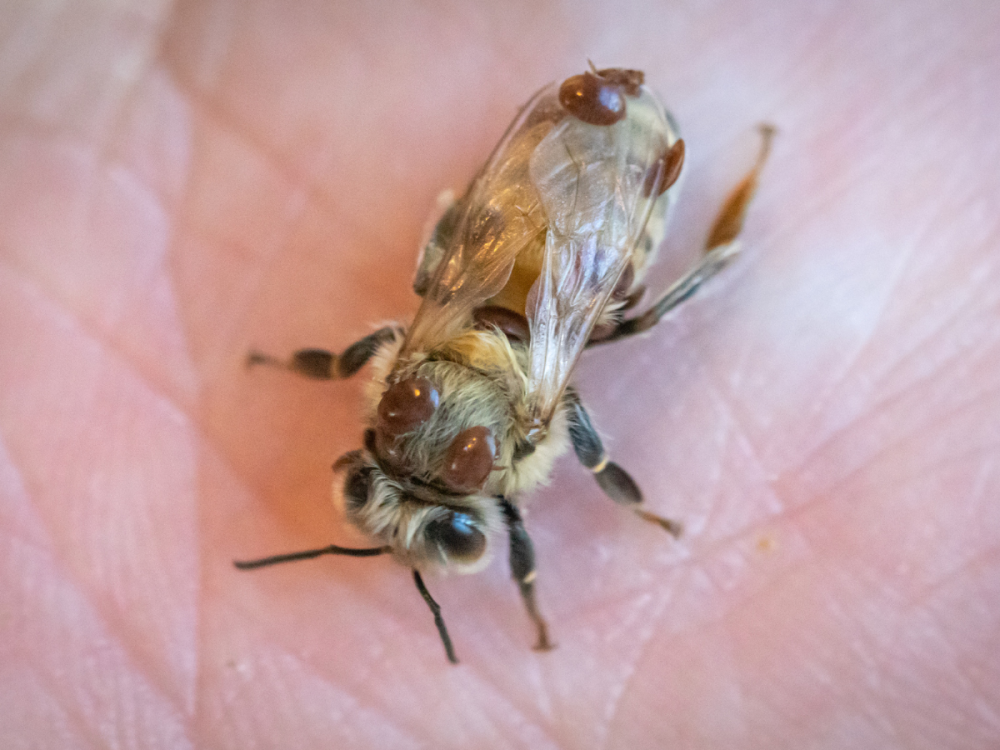2023-11-09 ペンシルベニア州立大学(PennState)

Deformed wing virus is often spread by the Varroa destructor mite, which can inflict damage both by living and feeding on bees directly and by spreading the virus. Credit: Kate Anton. All Rights Reserved.
◆研究は、「Proceedings of the Royal Society B」に最近掲載され、アイサカの森の野生のミツバチとニューヨーク・ペンシルベニアの管理された養蜂場のミツバチの間でDWVの感染率や深刻さを比較し、野生のミツバチの中で見られたウイルスの変異型は管理された養蜂場で見られたウイルスよりも感染が穏やかであることを示しました。このことから、ヒトのウイルスにおいても症状が軽くなるウイルス株が広まっている可能性があることが示唆されています。
<関連情報>
- https://www.psu.edu/news/agricultural-sciences/story/dangerous-bee-virus-less-deadly-least-one-us-forest-researchers-find/
- https://royalsocietypublishing.org/doi/full/10.1098/rspb.2023.1965#d60324485e1
野生のミツバチの孤立した集団における奇形翅ウィルスの適応的な病原性低下の特徴 Signatures of adaptive decreased virulence of deformed wing virus in an isolated population of wild honeybees (Apis mellifera)
Allyson M. Ray,Emma C. Gordon,Thomas D. Seeley,Jason L. RasgonandChristina M. Grozinger
Proceedings of the Royal Society B Published:25 October 2023
DOI:https://doi.org/10.1098/rspb.2023.1965

Abstract
Understanding the ecological and evolutionary processes that drive host–pathogen interactions is critical for combating epidemics and conserving species. The Varroa destructor mite and deformed wing virus (DWV) are two synergistic threats to Western honeybee (Apis mellifera) populations across the globe. Distinct honeybee populations have been found to self-sustain despite Varroa infestations, including colonies within the Arnot Forest outside Ithaca, NY, USA. We hypothesized that in these bee populations, DWV has been selected to produce an avirulent infection phenotype, allowing for the persistence of both host and disease-causing agents. To investigate this, we assessed the titre of viruses in bees from the Arnot Forest and managed apiaries, and assessed genomic variation and virulence differences between DWV isolates. Across groups, we found viral abundance was similar, but DWV genotypes were distinct. We also found that infections with isolates from the Arnot Forest resulted in higher survival and lower rates of symptomatic deformed wings, compared to analogous isolates from managed colonies, providing preliminary evidence to support the hypothesis of adaptive decreased viral virulence. Overall, this multi-level investigation of virus genotype and phenotype indicates that host ecological context can be a significant driver of viral evolution and host–pathogen interactions in honeybees.


